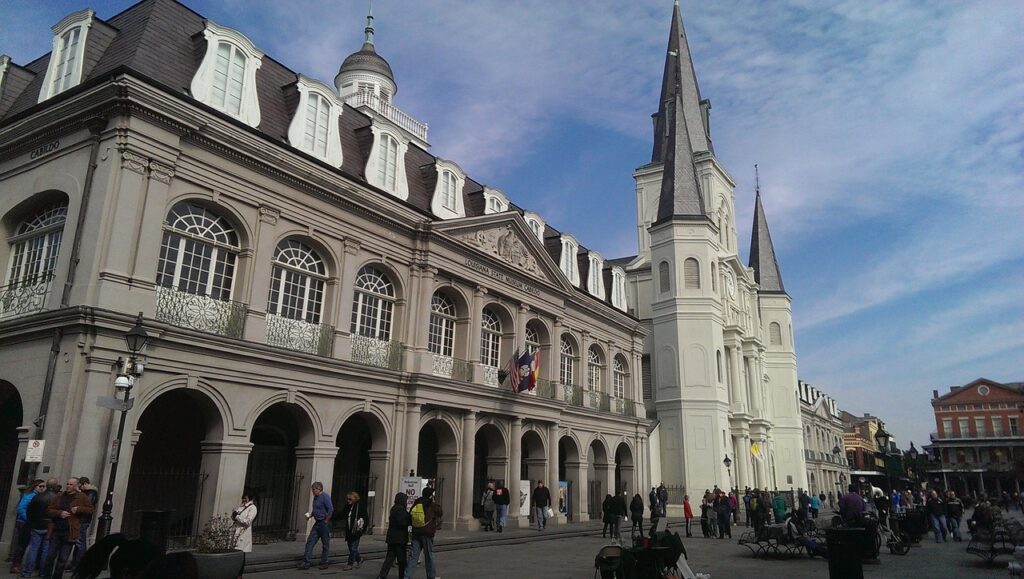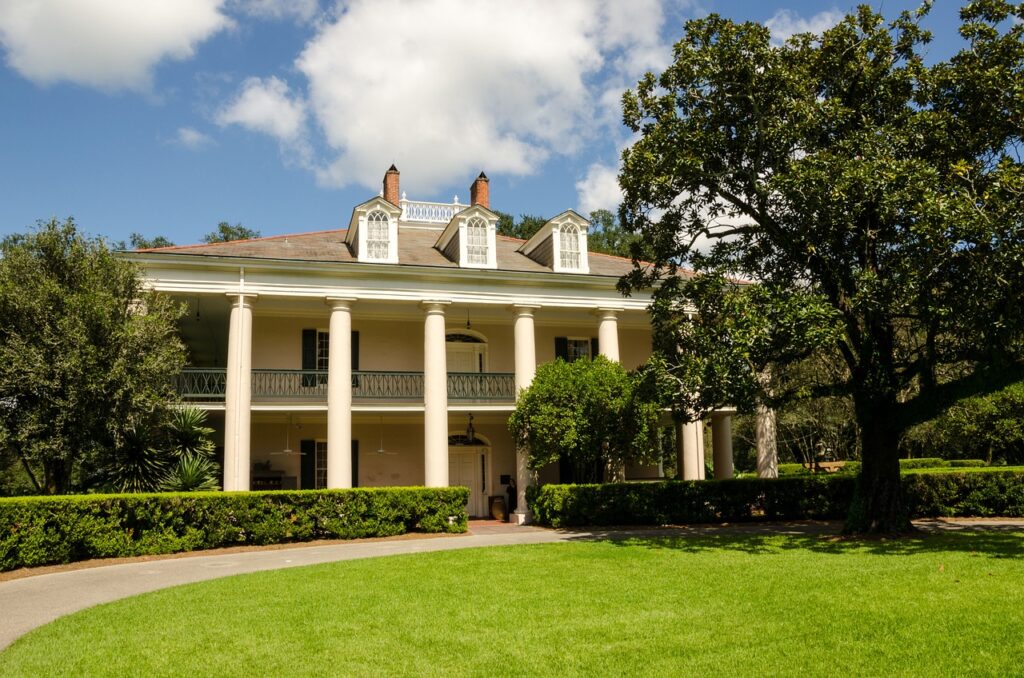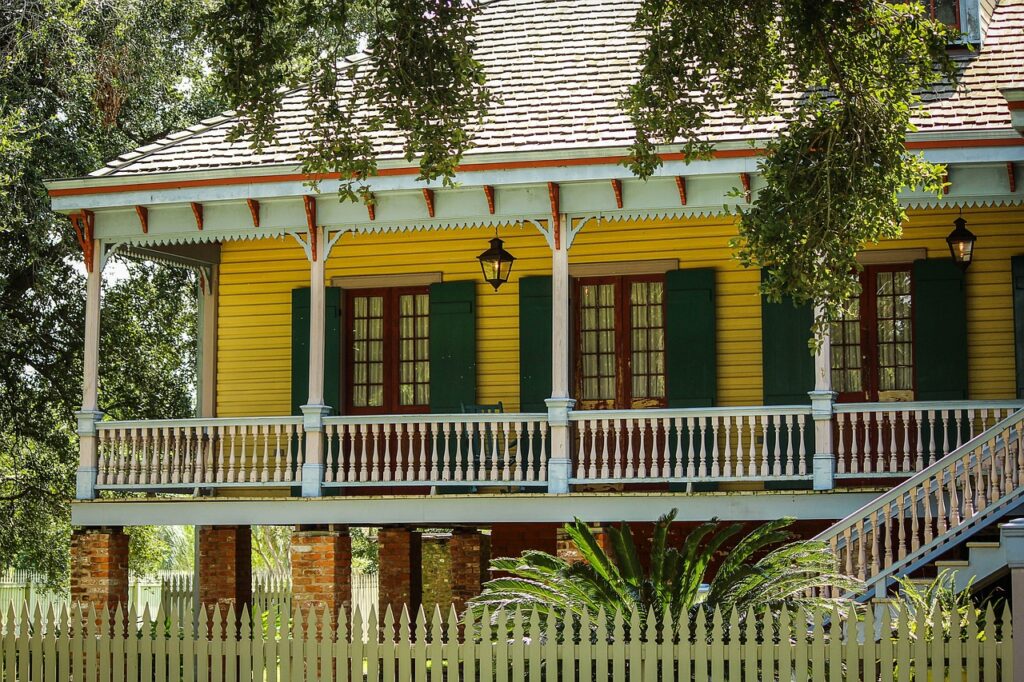Louisiana is home to some of the most stunning and historic French architecture in the United States. From stately plantation homes to quaint Creole cottages, French design has left an indelible mark on the architecture of the Pelican State.
When Louisiana was colonized in the early 1700s, French settlers brought with them the architectural traditions of their homeland. This French colonial style, with its iconic wraparound porches, symmetrical facades, and ornate ironwork, became a hallmark of Louisiana buildings.
Even after Louisiana was ceded to Spain and later became part of the United States, French influence continued to shape the state’s architecture. In New Orleans and other historic cities and towns, new buildings incorporated French design elements as a nod to Louisiana’s Gallic roots.
Today, visitors flock to Louisiana to admire its impressive collection of French-inspired homes, businesses, churches, and other structures. These beautiful buildings provide a window into the state’s rich cultural heritage.
From stately plantation manors to quaint Creole cottages, here are five of the most beautiful examples of French architecture in Louisiana:
1. The Cabildo
The Cabildo is one of the most iconic buildings in New Orleans. Located on Jackson Square, this former city hall was built by the Spanish between 1795-1799. The Cabildo showcases the Spanish Colonial style, with a curved pediment, arched openings, and a classic arcade front.
But look closer, and the French roots of the Cabildo become apparent. The building was constructed on the site of the former French city hall, using the French colonial architectural style. The wraparound arcade front is also reminiscent of French Quarter architecture.
Inside, the elegant Cabildo features a marble staircase, courtyards with fountains, and ornate iron balconies. It’s a stunning blend of French and Spanish design.

2. Shadows-on-the-Teche
Built in 1834, this historic plantation home in New Iberia reflects the French Creole style popular in Louisiana. The symmetrical facade features a central hallway floor plan, with two rooms on either side and wraparound porches upstairs and down.
The porches are supported by ornate Corinthian columns, and elaborate ironwork accents the balconies. The grounds also include several historic outbuildings built in the French Creole style, including a cook’s house, privy, and African American servants’ quarters.
Shadows-on-the-Teche provides a remarkably intact look at a 19th century French Creole plantation.
3. Pitot House
Built around 1799, the Pitot House is an excellent example of classic French Creole architecture. This historic home in New Orleans has a symmetrical facade, steep roof, and wraparound porches supported by slender columns.
The Pitot House showcases one of the signature details of French colonial design – the French door. Most of the rooms feature these floor-to-ceiling sets of double doors that open onto the porches.
Like other French Creole homes, the Pitot House has a central hall floor plan with two rooms on either side. Decorative ironwork accents the porches and balconies. Inside,crystal chandeliers, marble mantels, and cypress paneling reflect the home’s French heritage.
4. Destrehan Plantation
The oldest plantation home in the lower Mississippi Valley, Destrehan Plantation was originally built in the French West Indies style in 1787. After a fire, the home was rebuilt in 1850 in the Greek Revival style while retaining its symmetrical French layout.
The home’s distinctive French roots are still evident, from the narrow French doors to the wraparound porches on both floors. Intricate ironwork decorates the second-floor porch, a wrought-iron fence surrounds the grounds, and the exterior walls are stuccoed and scored to resemble stone.
Inside, the furnishings reflect French Creole style, like the iconic armoire a deux corps storage piece. Destrehan Plantation provides a look at how French design evolved in Louisiana architecture.

5. Laura Plantation
With its bright red roof and crescent-shaped porches, Laura Plantation is one of the most recognizable French Creole plantation homes. Built in 1805 by Guillaume Duparc, Laura features a brick ground floor, timber frame second floor, and wraparound porches accented by ornate columns.
The French architecture is immediately apparent, from the symmetry of the facade to the steep hipped roof with dormer windows. French doors open onto the porches, allowing for visibility and ventilation.
Laura Plantation also includes several outbuildings like slave cabins that represent French Creole architecture. This National Historic Landmark provides an authentic look at Louisiana’s French heritage.

Conclusion
From stately homes to historic public buildings, French architectural influence shapes some of Louisiana’s most iconic structures. These beautiful examples of French design reflect the state’s deep Gallic roots and diverse cultural heritage.
Exploring the Creole cottages of Cajun Country or the mansions of plantation country allows visitors to immerse themselves in over three centuries of Louisiana history. The state’s stunning French architecture provides a living connection to the past. So next time you’re traveling in Louisiana, be sure to admire these architectural gems that so beautifully fuse form and function. Let the graceful porches, ironwork, and decorative details transport you back in time. With just one glimpse, you’ll understand why French architecture adds such beauty and richness to the Pelican State.





